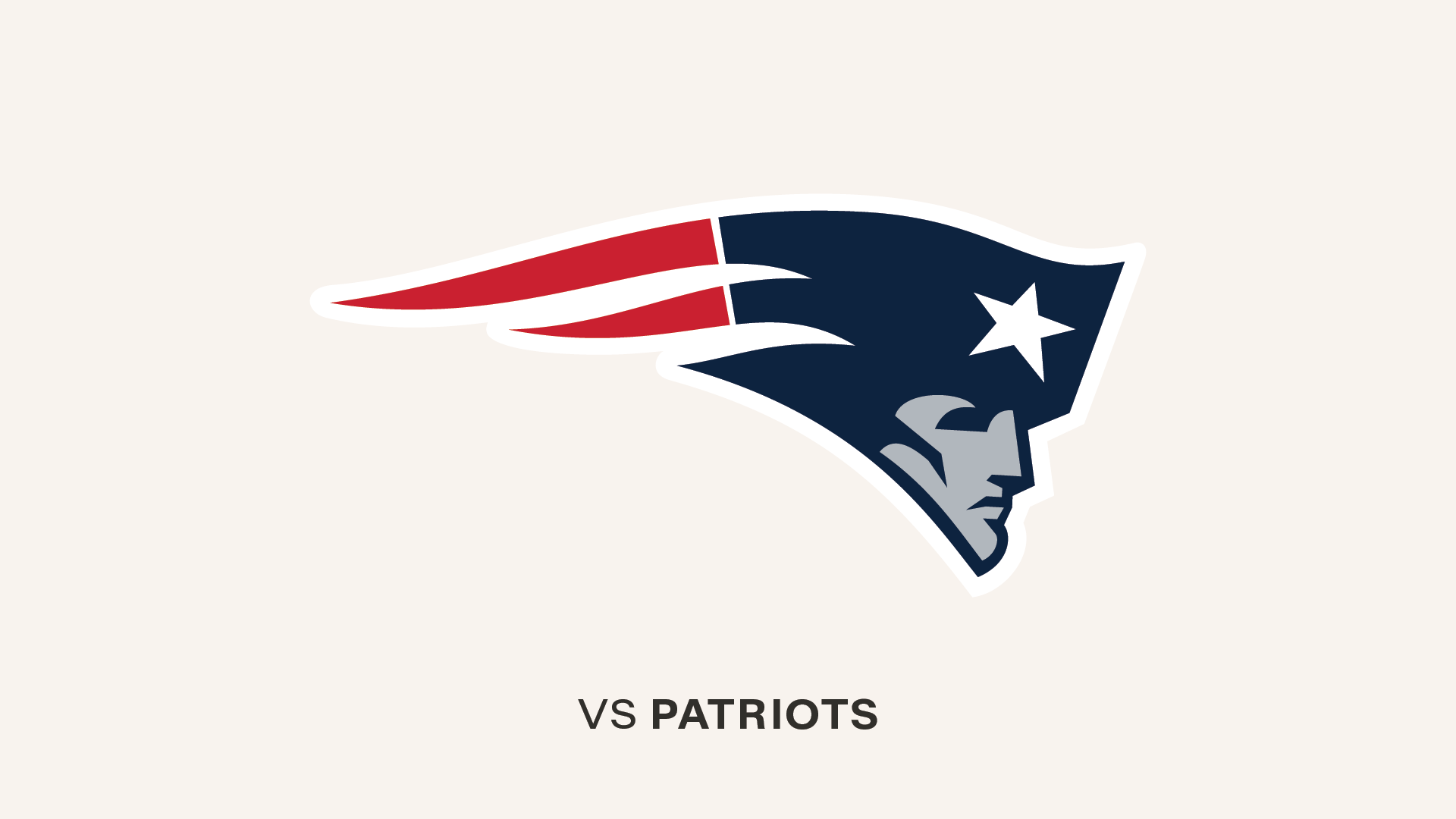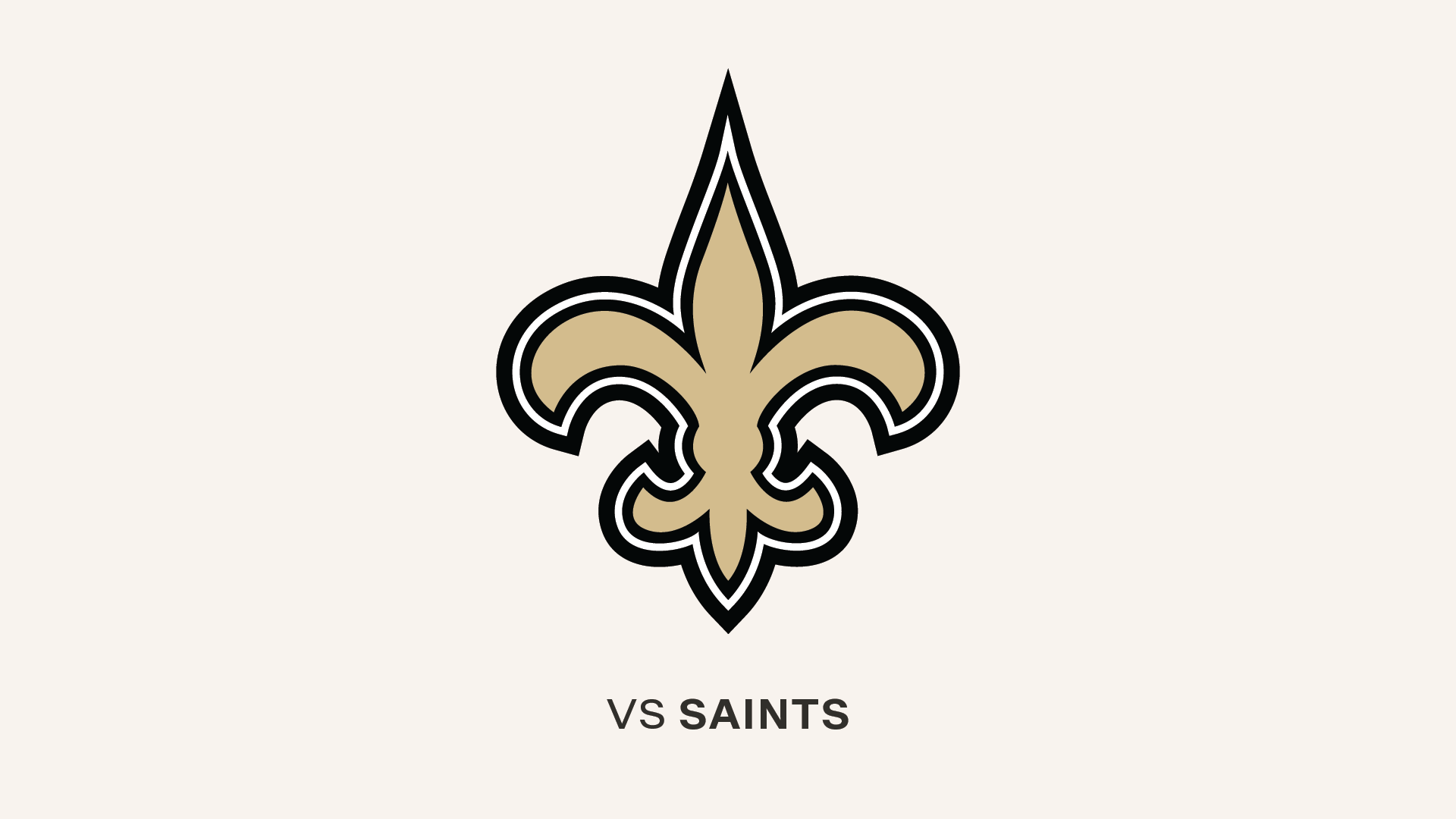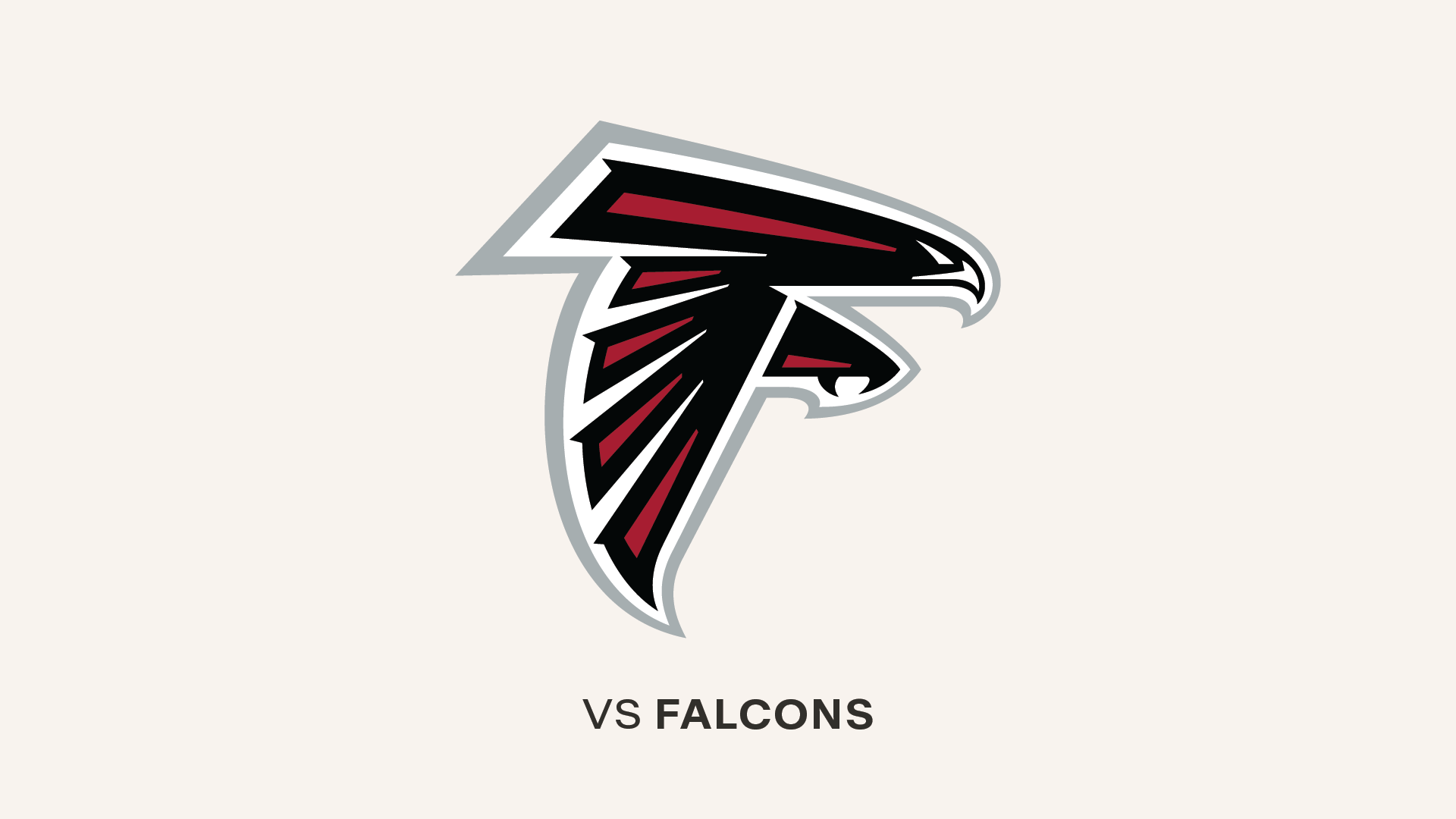Ready for installment #2 of the ol' Answer Man's triumphant comeback? I'm going "old-school" with today's intro, which to me means I devote a few paragraphs to some topic currently relevant to the Buccaneers before getting on to your questions. Today: The NFL Scouting Combine.
The Combine kicked off on Wednesday as kickers, offensive linemen and tight ends made up the first wave of players into Indy. The first on-field workouts, with this same group, will be on Saturday morning. The quarterbacks and running backs will get their workouts and 40-yard dashes on Sunday.
If you're following the Combine and other events leading up to the 2010 NFL Draft, then you've probably already read some earnest articles about how dangerous and ineffective it is to put too much stock in the workout results that come out of Indianapolis. At this point, pretty much everyone agrees: NFL scouts can get themselves into trouble by placing too much importance on Combine results, as opposed to the many hours of game tape they've already watched. Mike-Mamula-over-Warren-Sapp decisions can follow.
The question is, who is being warned at this point? Are teams still blinded by the Workout Warrior, bumping Combine stars up their board to the point that they end up "reaching" for an inferior player on draft weekend?
Answer Man thought he would look back at the reactions that came out of Indy last year at this time, and see if there were any draft repercussions of note. In the next few weeks, you will see articles regarding players who saw their draft "stock" rise or fall in Indianapolis, just as such evaluations were made after the Senior Bowl in January. That type of coverage comes out every year, and is legitimately very interesting. Let's take a look back at such stock assessments from 2009.
The more interesting examples are those players who were thought to have hurt their stock over the combine. Rapid risers like Mamula aren't that common anymore, and the already highly-rated players probably don't make much of a difference when they excel. Wake Forest linebacker Aaron Curry nailed every aspect of his workout, including a scintillating 40-yard dash time, but he was already thought of as a top-five pick going into the combine. Some analysts predicted that Curry's strong showing would vault him from the expected number-three pick to either second or even first, but in the end Curry actually went fourth. Kansas City, the expected first suitor for Curry, decided to go with LSU defensive end Tyson Jackson, who actually had a very pedestrian Combine showing.
In most cases, it is impossible to say for sure, after the fact, whether a player's Combine showing actually affected where he was drafted in a negative manner. For instance, the Jets got running back Shonn Greene in the third round, which was perhaps a bit later than some expected, but there's no way of knowing if Greene was going to go higher before the Combine.
However, Iowa's Greene is actually a fine example for this discussion. At last year's Combine, he ran a 4.72 in the 40-yard dash, which was worse than all but four of the other 26 backs on hand. Greene's score of 19 reps in the 225-pound bench press drill was better than only seven other backs, and he was not among the leaders at the Combine in the vertical leap or the broad jump. In post-Combine parlance, his draft stock had taken a hit, and perhaps that's why the 2008 Doak Walker Award winner as the best back in the country had to wait until the third round to hear his named called. On the other hand, he was the fourth back taken, and all three of those selected before him - Donald Brown, Beanie Wells and LeSean McCoy - looked like fine selections in their rookie years.
If Greene's stock dropped, it was a blessing for the Jets, who made him a big part of their rushing attack, especially after Leon Washington's season-ending injury. Thomas Jones was still the lead back in the Jets' attack during the regular season, but Greene took that mantle in the playoffs, pacing the team with 304 yards, 5.6 yards per carry and two touchdowns in three games. In retrospect, that wasn't a total surprise for a player who, Combine aside, filled out a scouting report nicely - good size (5-11, 227), powerful running style, instinctive moves and a hugely productive final college season.
A "poor" combine performance certainly didn't affect another highly-regarded Big Ten prospect, Ohio State cornerback Malcolm Jenkins. Jenkins supposedly hurt himself with a 4.6-second time in the 40-yard dash, and he did 10 fewer bench press reps than fellow top-rated corner Vontae Davis of Illinois. Some of the post-draft analysis suggested that Jenkins' showing would lead teams to consider him as a safety instead of a cornerback, which usually does not help a player's stock.
The Saints were not swayed. They used the 14th overall pick on Jenkins and he became a big contributor to their secondary, as New Orleans advanced all the way to the Super Bowl and won its first title.
Similarly, BYU receiver Austin Collie put up a poor 4.6 in the 40 at least year's Combine, better than only seven of the 36 receivers on hand. His stock was said to have dropped. Still, he was considered a middle-round prospect going in, and the Colts jumped on Collie in the fourth round. That proved to be a great move, as Collie caught 60 passes in 2009 to tie Percy Harvin for the lead among rookies. He also led all first-year players with seven touchdown catches.
I've got a few others, but I'm really edging into rambling territory here, so I'd better wrap it up. WR Derrius Heyward-Bey did indeed seem to improve his stock tremendously with a 4.30-second 40 at the Combine, ending up as the first receiver taken at #7 overall, but it's possible that Heyward-Bey's stock really only climbed in the eyes of one team (the Raiders, whose pick was not well-received). Brian Cushing had a very nice Combine workout, second only to Curry's among linebackers, and perhaps that's why he went first among the three highly-regarded USC 'backers. It was a good choice by Houston; Cushing won Defensive Rookie of the Year honors. South Carolina tight end Jared Cook came in as a probable third-round pick (according to the available analysis), ran a 4.5-second 40, and still went in the third round to Tennessee.
Et cetera. Conclusion drawn on grossly miniscule sample size: NFL teams have learned their lesson well when it comes to not over-valuing Combine workout numbers.
On to your questions.
**
- Ryan Lansdowne of Chicago, Illinois asks:
When the NFL changed its rule on forceouts last year or the year before (can't remember exactly when), I thought it was a good move. I say, give the defensive player credit if he can get to the receiver in time to knock him out of bounds before he gets his feet down. At the very least, it takes away that judgment rule that always looked wrong on the replays...and it wasn't reviewable!
But that got me to thinking...could a defensive player really use that new rule to his advantage? I know what I'm going to describe isn't very likely, but I bet it's going to happen at some point. What would be the call in this scenario: A receiver leaps to make a catch in the end zone, say two yards away from the end line. In attempting to make a hit, a defensive player who has not left the ground ends up kind of catching the receiver before he hits the ground. I mean, the receiver falls onto the defender in a way that he is held up in the air, without his feet or any part of his body having touched the ground. Could the defender then purposely hold the receiver off the ground and carry him over the end line before he touches down, thus keeping it from being a catch? Is that a legal form of a 'forceout?'
Thanks for helping me with this, Answer Man. I know we probably won't see a play like that, but if we do, I want to be the one who can turn to my buddies without pausing and say, 'No, this is the rule...'
Answer Man: I liked this question as soon as I read it, but I have to admit that I almost struck it from the mailbag in order to keep myself from looking bad. Allow me to explain.
Your question obviously sentenced me to another endless wade through the murky waters of the NFL Rulebook. To restate what I've said many times, the Rulebook is both awesome and awesomely dry. If you can't find your answer relatively quickly, it starts to feel like a maze of 10-foot hedges. I'm never getting out of here alive!
That's what happened to me with this one. Seemed straightforward enough - I should have been able to find the answer pretty quickly. Well, I couldn't. And I got more and more frustrated. It had to be in there. Ryan wasn't the first person who ever thought of the possibility of one player carrying another one out of bounds, was he?!
Well, as much as I would like to blame this wasted hour on the stilted language of the Rulebook, it was really all my fault. Get to that in a minute.
Frustrated and certain I had poked into every corner of that book, I decided to appeal to the experts for help. I copied Ryan's question to Mike Pereira, the NFL's Vice President of Officiating. If you have the NFL Network (which, I have to say, is also quite awesome), you've probably seen Pereira on the NFL Total Access show, doing his Official Review segment. What does Pereira do in those segments? Why, he explains rule interpretations!
So, yeah, good source, but surely a very busy man. I figured I'd send him the question and cross my fingers that he'd have time to answer at some point in the near future. Maybe Ryan's question would have to go in the next column.
About 60 seconds later, there was a reply from Pereira, with the answer. Now, this means two things. One, Mike Pereira is a very helpful NFL representative. And, two, this question wasn't nearly as mystery as I thought.
This was the key part of Pereira's response, Ryan:
"That would be a catch and carry and a touchdown. It is legal to knock the receiver out of bounds but if you catch him and carry him out it would be deemed a catch. Hope this helps."
You can't get any more straightforward than that answer. You cannot take advantage of the no-forceout rule by actually catching a player and carrying him out of bounds. I would still like to see somebody try it some time. And I guess Ryan would, too, so that he could impress his friends.
The epilogue to the story: Pereira's response - "That would be a catch and carry..." - sounded suspiciously official in its wording. In other words, it sounded like he was essentially quoting it straight out of the Rulebook (which he probably has memorized). Had I really missed it.
Uh, yeah. Now, suddenly, I can find it in two minutes. There it is, Rule 8, Section 1, Article 3, Item 6: Carried out of Bounds. And I quote:
"If a player, who is in possession of the ball, is held up and carried out of bounds by an opponent before both feet or any part of his body other than his hands touches the ground inbounds, it is a completed or intercepted pass."
You've made me look bad for the last time, 2009 Official Playing Rules and Casebook of the National Football League!
**
- Nick of Jefferson, New Jersey asks:
Were the Bucs the only team to win a Super Bowl in the franchise's first appearance in the Super Bowl?
Answer Man: Nick sent in his question four days before Super Bowl XLIV was played, so I'm going to give him the benefit of the doubt and assume he knows that the New Orleans Saints joined that club this year by beating the Indianapolis Colts in the Saints' first trip to the big game. So the answer is obviously no, the Bucs are not the only team to win their first Super Bowl appearance.
Actually, the answer was obviously no well before Tracy Porter sealed the Saints win with his big fourth quarter interception, and I can explain why in two words and one Roman numeral: Super Bowl I.
When Green Bay and Kansas City met in the first Super Bowl, following the 1966 season, it was obviously the initial appearance for both teams. You could quibble about past NFL or AFL championships (yes, they both had them, though K.C.'s came while it was still known as the Dallas Texans), but the Super Bowl was the first game to pit the NFL winner against the AFL winner. That later became the current AFC versus NFC format when the two leagues merged in 1970.
So, count Green Bay as the first team to win its initial Super Bowl appearance, but it didn't take long for there to be another one. In Super Bowl III, the Joe Namath-led New York Jets got the AFL its first Super Bowl title by upsetting the Baltimore Colts.
Since then, there have been seven more teams that won in their first Super Bowl appearances, including the Bucs and Saints. The other five were Pittsburgh in Super Bowl VIII, San Francisco in XVI, Chicago in XX, the New York Giants in XXI and Baltimore in XXXV. By the way, that list does not include the St. Louis Rams in XXXIV or the Indianapolis Colts in XLI, because both of those teams had made it to the Super Bowl previously while representing different cities.
**
- Devin Leech of Spring Hill, Florida asks:
What's the record for the most draft picks the Buccaneers have ever had on Draft Day?
Answer Man: I'm going to assume that you mean the entire draft weekend by "draft day," Devin. This year's draft is spread over two evenings and one afternoon, but most of them have been two-day affairs.
The Bucs head into this year's draft armed with 10 picks, a number that could go up or down through trades but is an impressive figure for what is thought to be a very deep talent pool. Tampa Bay could match its total of 10 choices in the 2007 draft, a class that included Tanard Jackson, Arron Sears, Quincy Black, Sabby Piscitelli, Adam Hayward and the late Gaines Adams. Of course, just two years prior to that, the Bucs loaded up with a full dozen players in the 2005 draft, ranging from Cadillac Williams to Barrett Ruud to Dan Buenning. That was easily the Bucs' biggest class since 1992.
Why do we pick 1992 as that cutoff? Because in 1993 the draft was shortened from 12 rounds to eight, and in 1994 it was further clipped to seven rounds, where it has remained since. Obviously, drafts from 1992 and earlier routinely produced much bigger classes. The Bucs made 13 picks in '92, another 14 in '91, 13 in '89 and a whopping 20 in 1987 thanks to a variety of trades under new Head Coach Ray Perkins. That '87 class included Vinny Testaverde, Ricky Reynolds, Winston Moss, Mark Carrier, Ron Hall, Bruce Hill, Curt Jarvis, Harry Swayne and, in the 12th round, Mike Shula, who would later return as a coach.
But here's the thing: The draft used to be even longer than 12 rounds, though Tampa Bay only got a small taste of that. In 1976, the Bucs first season in the league and first involved in the draft, it went 17 rounds; the very next year it was shortened to 12. In 1947, just to pick a year at random, the draft went 32 rounds, but of course there were far fewer teams, so the overall number of players selected wasn't that different.
So that 1976 draft is sure to be the Bucs' biggest class ever, right? Well, it depends on how we interpret your question, Devin. You said, 'the record for the most draft picks.' Did you mean, the most draft picks the Bucs held going into the draft, or the most picks they actually made? My guess is that you meant the latter.
The Bucs had a ton (that's a scientific assessment) of picks heading into their first college draft, but they were determined to use some of those to add veterans to their developing roster. Thus, a handful of the picks were traded for established players rather than spent by the Bucs. A total of five picks were traded to acquire QB Steve Spurrier, CB Mike Washington, LB Jim Peterson and LB Steve Reese. In the end, the Bucs made 20 picks in the draft, starting with Hall-of-Famer-to-be DE Lee Roy Selmon and also including Jimmy DuBose, Dewey Selmon, Steve Wilson and George Ragsdale.
The Bucs continued to trade picks liberally over the next few years; with that and the reduction of the rounds to 12 the team didn't come close to 20 again until that giant 1987 class. So it's a tie, right, between 1976 and 1987?
Maybe, maybe not. Here's the kicker. In the summer following the 1987 draft, the Bucs also used a third-round pick in the 1988 draft to grab DT Dan Sileo in the NFL's Supplemental Draft. In a very real way, Sileo was part of the Bucs' draft class of 1987, and if you count him as such, then it's a total of 21 players. The biggest class Tampa Bay has ever had.
**
- K9 of Clearwater, Florida asks:
Did the 2002 Buccaneers have the best defense in team history? If not, can you rank the top 5 Buccaneer Defenses in team history?
Answer Man: How long has this question been dogging you, K9?
Okay, um, on to the answer. This is, of course, subjective to some degree. However, I believe there are enough statistics to back up my answer, which is: Yes, I think the 2002 version was the best defense in team history. (I don't think I'm up for a debate about the best defenses in NFL history, so don't bother sending that follow-up, people.)
Three Buccaneer defenses have finished the year ranked first in the NFL - 1979, 2002 and 2005. That's not necessarily the best trait for judgment, because the rankings are based on yards, and winning the yardage battle doesn't always mean victory. But it's at least a starting point, especially if we compare the three seasons to see just how dominant those teams were in relation to the other teams in the league. Check out this little table I just whipped up. For each of those seasons it shows the Bucs' yards allowed per game, the yards allowed of the next best team and the average yards allowed per team.
|
Season |
Bucs |
#2 Team |
Avg. |
|
1979 |
246.8 |
266.9 |
315.9 |
|
2002 |
252.8 |
290.4 |
328.4 |
|
2005 |
277.8 |
281.9 |
315.9 |
This chart shows what many of us Buccaneer fans already knew intuitively; namely that the 2005 defense, while impressive, wasn't in the same league as the other two on the list, both of which led their teams to at least the conference championship game. The 2005 defense took over the top spot on the final weekend, only trumped the #2 team (Chicago) by 1.5% and was only 13.7% better than the league average.
The 1979 team's total was 8.1% better than the second-place team (Pittsburgh) and was 28.0% better than the league average. The 2002 team's total was 14.9% better than the second-place team (Carolina) and a 29.9% better than the league average. The '79 team allowed a slightly lower yardage total than the 2002 team but the game had evolved somewhat over those 23 years, as evidenced by the higher league average overall. The 2002 team was better than its contemporaries by a larger margin, though the difference isn't enormous.
Probably the best argument in favor of the 2002 defense involves scoring, and it's two-fold. First, the Bucs allowed only 196 points during the entire season, its second-lowest total after the 178 allowed in 1982...which was shortened to nine games by a strike and thus obviously is not in the same league. The Bucs allowed just 12.3 points per game that year, easily a team record. Next on the list is neither 1979 nor 2005 but the 1999 defense, which allowed 14.7 points per game. The '79 team does come in third, followed by the '77 and '78 teams, further indicating the difference in the NFL game between those two eras.
The showing of the 1999 defense, which by the way did finish third in the NFL in yards allowed and also had the third-lowest per-game total of any Buccaneer team after the '79 and '02 squads, reminds us that there are other crews that could challenge for the title of top Buccaneer dog even if they didn't lead the NFL that season. If you could follow that run-on sentence, then you might also get something out of this further analysis, which we will use to try to answer K9's second question.
Actually, if you look at how K9's letter is submitted, I technically don't have to answer the second question if I claim 2002 to be the best Bucs defense. But I'm paid by the word (that's my dirty little secret), so I will.
What are the earmarks of a good defense? Points allowed and yards allowed are obviously categories to look at, but what about takeaways and sacks? And isn't a defense that can score on its own - like that '02 squad - particularly valuable? What about getting off the field on third down?
Heck, how about all of it? I entered the numbers for each defense in team history in those six categories - yards allowed per game, points allowed per game, takeaways per game, sacks per game, opponent third-down success rate and defensive touchdowns - and then ranked them in each category from 1 to 34 (there were a few ties along the way). Most of the categories were rendered in "per game" format because I wanted to be able to accurately compare 16-game seasons with the two 14-gamers (1976 and '77), the nine-gamer (1982) and the 15-gamer (1987). I then added all six ranks and averaged them. The lowest total rank is the winner.
No reason to try to build suspense: Yes, the 2002 defense comes out on top, with an average rank of 4.33. The only category in which it fell out of the top 10 was takeaways, where it was 11th. The 2000 defense, which was the best sacks team in Buc history, roared up to take the second spot, followed by 1979. Coming in last was the 1986 crew, which ranked last or tied for last in every category except takeaways.
Here's a chart of the top 10:
|
Season |
Pts. |
Yards |
TOs |
TDs |
Sacks |
3rd% |
Avg. |
|
2002 |
1 |
2 |
11 |
1 |
5 |
6 |
4.33 |
|
2000 |
9 |
14 |
5 |
1 |
1 |
5 |
5.83 |
|
1979 |
3 |
1 |
11 |
8 |
10 |
3 |
6.00 |
|
1977 |
4 |
10 |
1 |
4 |
18 |
12 |
8.17 |
|
1999 |
2 |
3 |
21 |
16 |
5 |
4 |
8.50 |
|
2003 |
7 |
9 |
15 |
8 |
13 |
2 |
9.00 |
|
1978 |
5 |
4 |
3 |
23 |
20 |
7 |
10.33 |
|
2001 |
12 |
13 |
8 |
16 |
7 |
11 |
11.17 |
|
2005 |
11 |
7 |
22 |
8 |
13 |
9 |
11.67 |
|
2004 |
15 |
11 |
28 |
8 |
2 |
10 |
12.33 |
As you can see, every season from 1977-79 is on the list, as is every season from 1999-2005. Obviously, those teams shared a lot of the same standout players and were able to maintain the team's defensive strength for a good number of years. I think it's fair to say that the 2002 defense was the best single-season crew in team history, but it certainly had a lot of competition from those years around it.
That was fun, but I hope the next question requires a little less data entry.
**
- Gur Samuel of Edgware (suburb of London)/Nottingham, U.K. asks:
As a Bucs fan (even if I AM UK based), it is of course a source of pride that Ronde Barber is the only cornerback in NFL history in the fabled 20/20 club. I was wondering if there are any other cornerbacks in the NFL which have come close to matching Ronde's membership of this 20/20 club, or are likely to do so in the future. As a second question, I was just wondering what Answer Man's opinion was of whether or not Ronde would be able to make another 5 sacks during the remainder of his career, in order to join Rodney Harrison as the only people in NFL history to make the 30/30 club?
Answer Man: Okay, good. Here's one where somebody else has already done the stats compilation and I just have to wade through it for the relevant bits. First I should fill in the blanks in Gur's question, in case there is anyone out there wondering what the 20/20 club is.
Only 10 players in NFL history (so far) have totaled at least 20 sacks and 20 interceptions in their careers: Ronde Barber (37 interceptions, 25.0 sacks), LeRoy Butler (38, 20.5), Brian Dawkins (36, 21.0), Donnie Edwards (28, 23.5), Rodney Harrison (34, 30.5), Seth Joyner (24, 52.0), Ray Lewis (28, 36.5), Wilber Marshall (23, 45.0), William Thomas (27, 37.0) and Adrian Wilson (23, 20.5). As you can see, the list is dominated by linebackers (Edwards, Joyner, Lewis, Marshall and Thomas), with four of the other five being safeties (Butler, Dawkins, Harrison and Wilson). Our very own Barber is the only cornerback on the list.
Who else has gotten close? Concerning ourselves only with players who have at least 15 of both, here are players whose careers are over but at one time had a shot at the mark: Ray Crockett (36 interceptions, 15.5 sacks), Dennis Smith (30, 15), John Anderson (25, 19.5), Woodrow Lowe (21, 15), Dave Duerson (20, 16), Mike Merriweather (18, 41), Bill Romanowski (18, 39.5), Monte Coleman (17, 43.5), Marvcus Patton (17, 27.5), Zach Thomas (17, 20.5), Carnell Lake (16, 25.0), Clay Matthews (16, 69.5), Reggie Williams (16, 41.0), Bryan Hinkle (15, 22.5) and Billy Ray Smith (15, 26.5).
That list, too, is dominated by linebackers, 11 of the 16, in fact. That's not surprising, since the 'backers are the middle level of the defense and are often charged with both pass-rushing and coverage. Smith, Milloy, Duerson and Lake all played safety, which leaves us with Ray Crockett, the only cornerback on the list.
Who might still have a shot? Well, there are any number of young players in the league who might eventually have 20/20 in them, but that's pretty much impossible to predict. So, sticking with the limitations of players who already have at least 15 sacks and 15 interceptions in their careers, we find eight men who were still active in 2009 and meet those criteria: Lawyer Milloy (25 interceptions, 17 sacks), Deshea Townsend (21, 15.5), Keith Bulluck (19, 18), Junior Seau (18, 56.5), Brian Urlacher (17, 37.5), Mike Peterson (16, 20.5), London Fletcher (15, 30) and Takeo Spikes (15, 27.5).
What do we have on that list? Six linebackers, one safety and Mr. Townsend, the only cornerback in the discussion. Is Townsend a threat? Well, he's 4.5 sacks short of the mark, but he hasn't had a sack since 2006. He's spent his entire career in Pittsburgh, but hasn't been a regular starter the last two seasons. His single-season high is four sacks, set back in 2004. The threat level just doesn't seem that high. Townsend has always been a good rusher off the edge for a cornerback, but his reduced role in recent years and his lack of sacks for some time now would apparently make him a long shot to get those last 4.5 QB takedowns.
So Barber is likely to stay the only 20/20 cornerback for awhile. But could he, as the second part of your question asks, join Rodney Harrison as the only 30/30 players - at any position - in league history? Well, my Buccaneer bias is likely to make me more bullish on Barber than I was on Townsend, even though Barber has already played 13 seasons. There are a few reasons why I can defend that bullishness, however.
One, Barber is still an entrenched starter and still playing at a high level. He didn't add to his team-record interception total last year, but he played extremely well and even added a pair of sacks. Take a look at Barber's sack totals going backward from last season through 1998: 2.0, 2.0, 1.0, 0, 2.0, 3.0, 1.5, 3.0, 1.0, 5.5, 1.0, 3.0.
Barber needs five more sacks to make the 30/30 club, and he's only reached that total in a single season once, and that was back in 2000. As biased as I am, it doesn't seem likely he'll get all five in one season. However, he's had at least two sacks in four of the last six years, including the last two. Two more seasons at that rate and he'd be right on the cusp; it's not so hard to imagine one extra sack thrown in there over the next two seasons. One thing in Barber's favor is that he continues to move into the slot position when the Bucs go from their base defense to the nickel package, and a slot corner is more likely to blitz the quarterback.
On the other side of the argument, however, is a more sobering note: The collective bargaining agreement. If negotiations on the next CBA lead to a work stoppage in 2011, that would obviously do severe damage to Barber's chances. That, of course, is only one of a million reasons we're all hoping that doesn't occur.
**
- Douglas Nix of Tampa, Florida asks:
Is there a reason why you do NOT give us [FANS] the option to make your video screen open up to "FULL SCREEN?" It just makes watching your videos more enjoyable! Thank you for your time.
Answer Man: Douglas was very persistent with this question, sending it three or four times over a span of a few days, and you can tell by the selective CAPS that he's serious.
And you know what? It's a darn good question. Let me ask you this, Douglas, spokesperson for the [FANS]:
What is the most exciting thing to happen on Buccaneers.com in a long time?
The answer, of course, is the return of the Answer Man. Amiright?! But coming in a close second is the launching of a brand new, completely awesome Buccaneers.com this spring. Due to touch down in mid-April (look for a sneak preview at some point before that, and some 'leaked' photos of the graphics on our Facebook page), the new Buccaneers.com will be our best one yet. You will find more fan-friendly material, more video and simply more options overall. You won't have to wait long for the specifics.
And one more thing the new Buccaneers.com will have: An option to open the video to full screen. Sorry, I mean FULL SCREEN.
So, thanks for your questions, Doug, and the kind words about our videos overall. It won't be long until they're filling your entire screen.
**
- Al of Fredericksburg, Virginia asks:
Where have you been, Answer Man? Welcome back! Why does the NFL restrict the number of players active for a game? Why not activate the full 53-man roster?
Answer Man: You have to look at this thing from a historical perspective, Al, and realize that the 53/45-man roster was considered an expansion, not a restriction.
When the NFL first set a roster limit, in 1925, you know what it was? Sixteen. Sixteen! Can you imagine? Obviously, it was a two-way game back then. Over the years, the rosters expanded gradually; the limit went to 18 in 1926, 20 in 1930, 24 in 1935, and so on. It held pretty steady in the mid-30s until the '60s, during which it expanded to 40. It held there until 1974, when it made a sudden jump to 47, returning the following year to 43 and then inching back up to 45 in 1978. It has essentially been 45 ever since, though it briefly went up to 49 from 1982-84, and the eight-man inactive concept was added in 1991.
I'm sure any football fan can guess the two main reasons for this gradual expansion: player specialization and greater interest in the game (also creating a greater pool of players interested in playing). Two-way players are a thing of the past, so teams already have a base need of 22 starters plus kickers. The remainder of the roster is for depth and specialists - e.g., return men, nickel-backs, third-down running backs, blocking tight ends, etc.
Specialization and substitution are obviously big parts of the NFL game, but the league doesn't want it to get out of hand. So the move to the 53/45 system in 1991 didn't take anything away from teams; rather, it gave them eight more players they could keep on their roster and potentially use on game day. As injuries occur, that eight-man roster cushion becomes very important. Often, a team's list of eight inactive players for a mid-season game will be at least half full of injured players, with formerly inactive men stepping in to take their places.
The 53/45 system does force teams to make some tough decisions on the morning of the game (for years, it was even more difficult, because the league required teams to submit four of their inactives on Friday and the other four on game day). A team might carry 10 offensive linemen and nine linebackers on their 53-man roster, for instance. When it comes to game day, do you keep a third backup lineman active in case of multiple injuries on the line, or do you use that 45th active spot on a reserve linebacker who can help you on special teams.
Given that, couldn't the league tweak the system again and make it, say, 47 or 48 active players? That would allow the team in the above example to keep both the lineman and the linebacker active. That very idea is discussed by the NFL's rule-making Competition Committee not infrequently, but so far it has always been shot down. One counterargument: If one team needs those 46th and 47th active spots to increase depth at a spot with injuries, but the opposing team is healthier and can use the spots to keep up an extra receiver or defensive back, then isn't the second team getting an advantage?
Essentially, the NFL has drawn a line at 45 players and kept it there for two-and-a-half decades, Al. Given the fluctuation of the roster limits for the rest of the league's history before 1985, that's an extraordinarily long time to stick with one system. I wouldn't expect a change any time soon.
By the way, do you ever get déjà vu? I just did while writing that answer. I have a feeling I've tackled this subject before, but a long time ago. I suppose I could go through my archive and check. Let's see, how much time have a I spent on this column already? A year? Yeah, I think I'll skip the stroll through the past and just hope I haven't contradicted myself.
**
- Christopher Roberts of Tampa, Florida asks:
Do the Bucs plan on wearing their throwback uniforms again in 2010?
Answer Man: Yes!
I hope that answer is as exciting for you as it is for me! Those orange uniforms the team wore against Green Bay last year were fantastic, were they not? The fact that it coincided with the first start for Josh Freeman and Tampa Bay's first win of the year made the day even more memorable. I remember hearing people say the team should just keep wearing them the rest of the year, given that the game went so well.
Of course, you can't do that. Teams have to submit their uniform choices well in advance of the season. In addition, you can only wear throwbacks twice during the regular season, though you can add a third game to the mix by choosing to wear them in the preseason.
The other thing: When you choose to include a throwback day on your schedule, as the Bucs did for the first time in 2009, you actually commit to doing it at least once a year for the next five season. So get ready to see the orange again not only in 2009 but all the way through 2013 at the least.
**
- Robert Wygant of Port Richey, Florida asks:
Feel free to edit the length of this question. During the Super Bowl when Tracy Porter made the great interception and return for a touchdown, it clearly shows that DE #91 Will Smith made a block in the back to Peyton Manning, who was the last hope for a tackle. Is this a penalty only when an offensive player is guilty or should the touchdown have been called back to the spot of the penalty? I was rooting for the Saints to win for the NFC South but have to wonder about that play. Thank you.
Answer Man: Edit? Oh yeah, because I'm obviously all about brevity. The only thing I did edit in your question was MAKING SUPER BOWL TWO WORDS!!! Have I mentioned that pet peeve before? Seeing "superbowl" makes me grind my teeth.
Anyway, I'm not interested in getting either Saints or Colts fans riled up, so I'm going to skip whether or not the block really was in the back. Watch the video and view the stills from several angles (and from several different deep-seated biases, if we're to be honest) and you can interpret it both ways. Does Manning turn just as the block is beginning, or does he start to turn because Porter has cut behind him and is then blocked in the back? To the Answer Man, it looks as if Manning has overrun the play anyway after Porter's cut back to the middle and had no shot at making the tackle (not that that would invalidate a penalty, if one was called).
So the gist of your question is essentially, is a block-in-the-back, something you usually see called on an offensive player, still a penalty if it is performed by a defensive player after a turnover. The answer, as I imagine many NFL fans would be screaming at the screen right now, is yes.
Rule 12, Section 1, Article 4, part (b) states:
An offensive blocker cannot charge or fall into the back of an opponent above the waist, or use his hands or arms to push an opponent from behind in a manner that affects his movement, except in close-line play.
It goes on to note that this applies to players of the kicking team while the ball is in flight. That might seem irrelevant to this discussion, but it's not. Why point this out about the ball being in flight? Because nobody is yet in possession of said ball. I know that definition above says "offensive blocker," which might make it seem like the block-in-the-back prohibition doesn't apply to a defensive player like Smith. However, much earlier in the rulebook the "Offense" is defined as whichever team has possession the ball, and the "Defense" is defined as the other team. For purposes of the rulebook, Smith became an offensive player when his teammate took possession of the ball.
The result of the penalty, had it been called, would have been 10 yards from the spot of the foul for illegal use of hands. Smith makes contact with Manning at about the Indianapolis 48, so it would have been New Orleans' ball (it would have been a post-possession foul) at the Saints' 42 with approximately 3:15 left in the game and the Saints up, 24-17.
**
And now, I will finish the main Q&A section (a few quickies follow below) with what I believe might be the most pointless question I have ever received. Not uninteresting, mind you. Just pointless. I mean, it's so...it's just... I can't help myself! I have to answer this one!
- Kyle Calkins of Edmonton, A.B. Canada asks:
Hello Answer Man, I have a question for you. [Editor's note: That's kind of the point.] How many seconds has it been since the Bucs won the Super Bowl? It's 5:40 and 36 seconds in the PM right now in Mountain Standard Time.
Answer Man: Kyle, did you know that January 11 of this year was the last Ambigram Day we'll see for 50 years? I made up that term, Ambigram Day, when I noticed that if you wrote the date as such - 01-11-10 - it became a piece of text that read exactly the same if you flipped it 180 degrees. It's more than a palindrome (example: 04-22-40 or radar); it's a word picture that reads the same from different perspectives. The next time you'll be able to take a date, write it in that six-digit, two-dash format, then flip it 180 degrees and have it read the same is September 11, 2060, or 09-11-60. Try it out.
I bring this up because I have to imagine you're the type of person who would like such trivial but (to some of us) interesting number play. Why else would you need to know the number of seconds since the Bucs' win in Super Bowl XXXVII? I mean, by the time I get you the answer, it's already several weeks outdated.
But, like I said, I can't help myself.
The Buccaneers won the Super Bowl on January 26, 2003. The game started at 4:26 p.m. in the Mountain Time Zone and lasted three hours and 50 minutes. I'm going to set the time the Bucs officially won the Super Bowl as the moment the game ended. There are no seconds listed on the NFL's documents, so we'll have to start with 8:16:00 p.m. MT.
Seven years passed from the date of the Super Bowl win to January 26, 2010; multiply that by 365 days per year and you have 2,555 days. You also have to add one extra day each for the Leap Years of 2004 and 2008, so we're at 2,557 days. Kyle's e-mail was sent on February 14 of this year (what a romantic guy, huh?), so we'll add 18 days to get to February 13, and then figure out the hours to his specific time on the 14th. So right now we're at 2,575 days, which when multiplied by 24 hours per day returns a nicely round number of 61,800 hours.
From February 13 at 8:16 p.m. to February 14 at 5:16 p.m. is another 21 hours, so we're at 61,821 hours now. Multiply that by 60 minutes in an hour and you get 3,709,260 minutes to that point. From 5:16 p.m. to 5:40 p.m., the time you set for this exercise, is another 24 minutes, so our minutes total is 3,709,284.
We're almost there. Multiply the minutes total by 60 seconds per minute and you get 222,557,040 seconds. You said that it was 36 seconds past the minute when you set the time, so we actually have 222,557,076 seconds.
So there's your answer, right? WRONG!
I know, I know, I know that if I had stopped there I would have received a follow-up e-mail or two from some smarty-pants telling me I had forgotten about Leap Seconds. Well, I didn't forget about Leap Seconds! So there. Every so often, a positive or negative one-second adjustment is made to the Coordinated Universal Time time scale, as determined by the International Earth Rotation and Reference Systems Service, in order to keep the official time we use coordinated with mean solar time. Since the Bucs won the Super Bowl, one Leap Second was added to the end of December 31 in 2005 and 2008. So throw those suckers on the pile, too.
So, Kyle, from the moment the Buccaneers won Super Bowl XXXVII to the second you asked your question, a total of 222,557,078 seconds passed. Two-hundred-twenty-two million, five-hundred-fifty-seven thousand and 78 seconds. Now you know.
I just spent a half-hour on that. When you read through this entire thing and realize that your own great question wasn't answered, blame Kyle. He put a piece of catnip in front of my face and I couldn't resist.
**
As always, let's finish this up with a handful of quickies. These are questions that don't really require the sort of elaborate write-ups you just slogged through. We also use this section to include questions that have already been answered in previous columns.
11. Dave of Tampa, Florida asks:When is the first FanFest of 2010?* *
Answer Man: Get used to this question in our quickies section, because I will continue to get it in my mailbag all spring no matter how many times I answer it. That said, this is the first time in 2010, so congratulations, Dave!
I only know of one FanFest, so I'm not sure what the "first" in your question means. This year it will be held on Saturday, June 19 at Raymond James Stadium and, like always, it is an amazing opportunity for fans to meet players and cheerleaders, get autographs, hear from the coaches about the upcoming season, play games on the field, sample Pewter Partner products, watch cool videos on BucVision and generally immerse oneself in Buccaneerness for a few hours.
But wait, I have news of a very cool new development: For the first time, FanFest will be in the evening this year! How great is that? All the fun of FanFest, with hopefully some cooler temperatures. Stay tuned for an announcement of the exact event times and other details.
**
12. Nick of Orlando, Florida asks:Who was the highest drafted defensive player in buccaneer history?
Answer Man: None other than Hall of Fame DE Lee Roy Selmon, also the first college draft pick in franchise history. Selmon went first overall in 1976. Good pick. The Bucs other three first-overall picks have all been offensive players: RB Ricky Bell, RB Bo Jackson, QB Vinny Testaverde.
**
13. Adam of Sudbury, Ontario asks:What are the logos by the sidelines, near midfield at Gillette Field?
Answer Man: What am I, the Patriots Answer Man? Even though I really don't feel obligated to answer this one, I will because it's easy. That's the logo for the stadium itself. Visit the stadium's web site and you'll see the logo right up in the upper left. Of course, the logo on the web site includes the words "Gillette Stadium," which certainly makes it less mysterious. On the field, it's just the part representing the structure. The vertical part of the logo jutting toward the middle of the field is a stylized version of the stadium's iconic lighthouse.
**
14. Bogdan of Galati, Romania asks: Hey Answer Man. I'm writing all the way from Europe asking about the number of picks in the '10 draft. Weren't we supposed to pick 3 times in the 2nd round this year? I mean we have our pick plus the one from Chicago but as I remember we got a 2nd-round pick from the Patriots for Alex Smith. I must be mistaken, but where is that pick? Thanks a lot A.M. and Go BUCS all the way from Romania!
Answer Man: You're right about us having our own pick (#35) and one from Chicago (either #42 or #44 depending upon a coin flip at the Combine) for the Gaines Adams trade. However, the Alex Smith trade brought back a fifth-round pick in 2010, not a second.
**
Okay, truth be told I had hoped to get to two more questions. One, from Chris in Apopka, Florida regarded what I would call an attempt at "goaltending" on a field goal in the NFL. The other came from a Nathaniel up in Maine and asked about the Bucs' early history as an AFC West and then NFC Central team.
However, I think this column is long enough as it is. I'll save those two questions for my next column in two weeks, and hopefully get a whole bunch more good ones from all you folks over the coming fortnight. Until then, this is the Answer Man signing off. Take care, and enjoy the Combine coverage on the NFL Network. If you want to watch the workouts live online, here is a link on NFL.com.







































